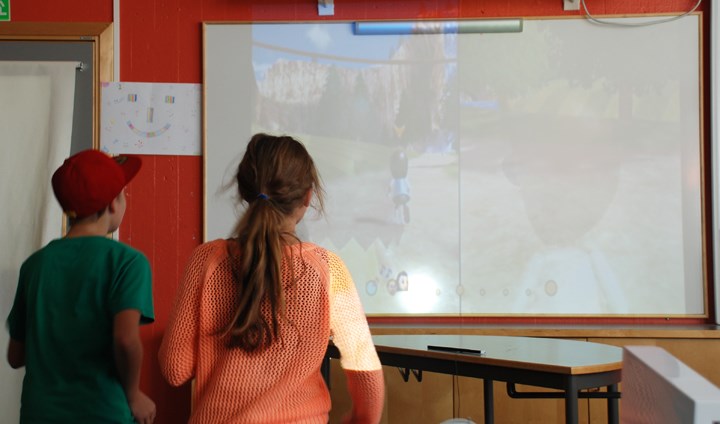Pros and cons of video games in schools

Video games can encourage children to exercise
Video games that include physical exercise, known as exergames, encourage children to exercise and counteract overweight – two reasons why schools in several countries use them in physical education.
"One drawback is that health in some games is all about burning calories and measuring BMI. An advantage is that video games can be used as a learning aid in teaching, such as in dance," says Professor Mikael Quennerstedt.

"Playing a video game gives points for burning calories. Likewise, the body is portrayed as having an ideal BMI of 22 – even though we know that BMI says little about a person's health. Alarmingly, some video games amplify the media image of a healthy individual, while others focus on rankings, comparison and competition. So as a learning aid, video games have obvious problems," says Mikael Quennerstedt, and continues:
"At the same time video gaming is viewed as an alternative to playing traditional ball games in physical education, which can attract more pupils to exercising, since they have fun doing it."
He has led the research project, which was initiated after schools in many countries have introduced video games in education, such as England, Australia, USA and Singapore. The project intends to establish a scientific foundation of the pros and cons of using video games in education, before the method is introduced more widely in Swedish schools.
"Countries that took in video games on a broad front had an obvious goal in doing so, to address the problem that increasing numbers of children are overweight. It is quite simply about getting young people to exercise and burn off calories. In Sweden, this is not a primary objective of physical education. Pupils are in physical education class to learn. It is all about acquiring knowledge."
Therefore, Mikael Quennerstedt and his colleagues have focused on what children and young people learn from the games. Games can keep track of you and if you have not played in a while, you will be reminded and be singled out as a couch potato. Games may contain both praise and criticism, and if you enter your height and weight, your avatar's size changes correspondingly.
"Seeing yourself reflected on screen in a video game can be a positive experience if the player is satisfied with one's body. On the other hand, if that is not the case, then a video game can create or amplify a negative self-image."
Dancing games positive example
However, researchers point out that when used correctly, some games can work well as learning aids in schools. A positive example is using dancing games. Teachers can put aside their instructor role of presenting a dance, and instead allow time for observation, support, encouragement and assessment – in other words, teaching.
In the researchers' final report submitted to the Swedish Research Council, they emphasised that it is all about how teachers teach and how they use video games. As with the use of all learning aids, the teacher plays a central role in their successful use.
"Just like you can't only toss out a ball to a class, a teacher cannot just put pupils in front of video game either. It has to be a question of teaching, knowledge and learning – rather than of calorie consumption and activity levels."
Text: Linda Harradine
Translation: Jerry Gray
